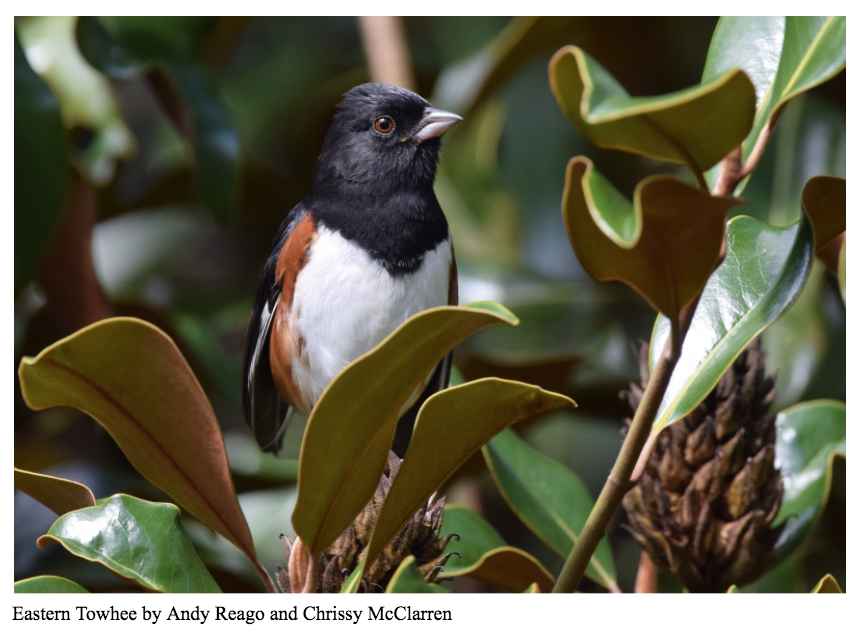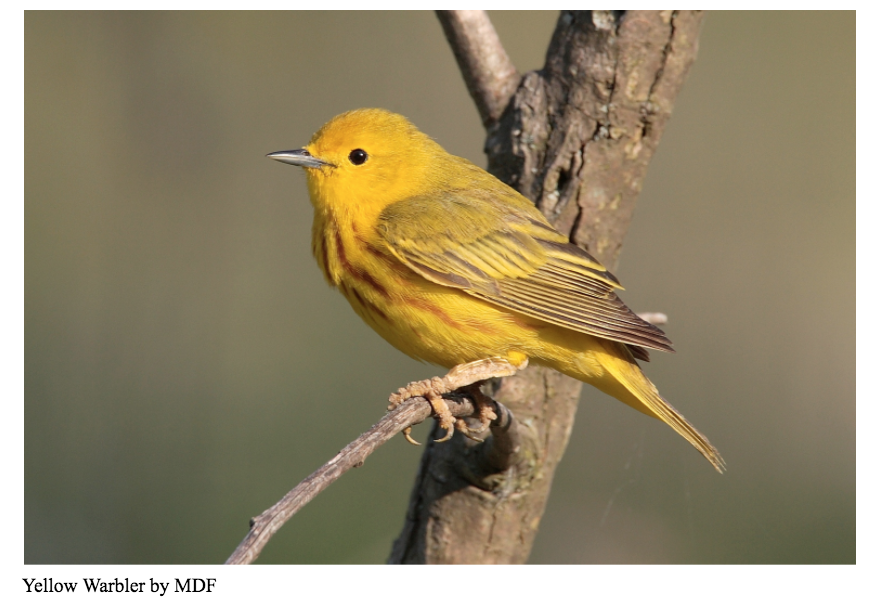Meet the Birds Singing on Coastal New England in Summer
By Ben Mirin, Safina Center Fellow
This summer I’ve spent six weeks recording bird song at various locations across coastal New England, from Martha’s Vineyard to Cape Cod to Appledore Island in the Gulf of Maine. As a Boston native, it was a privilege to record bird songs in an area I’ve known since childhood, and I’d like you to meet some of the cast.
Most bird songs make you look up into the trees, but the “Drink your tea” song of the Eastern Towhee is a cue to look down. These birds forage in the leaf litter for insects and seeds, and if you’re lucky you just might see a male like this one, kicking the leaves back and forth with both feet in little, hungry jumps.
Warblers on Appledore Island like the maritime shrub habitat around Crystal Lake. In the southern heart of the island, the brush is thick, the water is fresh, and you can just barely hear the bells of ocean buoys riding up and down in the waves. The higher-pitched sounds of seabirds on the ocean get absorbed as they reflect off thick summer leaves, and on the top of a small tree, a Yellow Warbler (Setophaga petechia) sings its heart out. These birds breed on the island in summer, and begin singing an hour before dawn in defense of the territories they have carved out for their nests. They’ll be here until the fall.
The Gray Catbird (Dumetella carolinensis) is one of three species in the genus Mimidae in the Northeastern United States. Mimids are famous for their abilities to mimic other songbirds, and males compete for females by learning as many songs as possible. When you can’t see these birds, you can tell them apart by the number of repetitions in their song patterns. Northern Mockingbirds tend to repeat patterns four or five times, Brown Thrashers three times, and Gray Catbirds don’t repeat themselves at all! In the background of this track, you can hear a creche (all-female group) of Common Eiders and their ducklings convening on the pond nearby.
As one of the most active foragers in the canopy during spring and summer, the Red-eyed Vireo (Vireo olivaceus) is surprisingly difficult to spot. I got lucky with this bird, who sang uninterrupted for fifteen minutes straight as I patrolled his feeding ground, scanning the foliage and the treetops. His is a true song of New England summers, and its mnemonic may have helped me find him: “Here I am, look at me, way up high, in a tree.”
Many people have asked me if I ever get tired of seeing common birds. As one of the most widespread of all songbirds in North America, this Northern Cardinal (Cardinalis cardinalis) should explain why I always have the same answer. No. Never. This male’s song is highly unusual because it includes a trillat the end. Like Song Sparrows, this species has regional dialects, and the experience makes me wonder how widespread trills are among Cardinals in the Northeast. As with many of the songs on this list, deeper listening reveals an endless list of questions.
Wrens are some of the most accomplished vocalists among all North American songbirds, and among members of this musical family, the Carolina Wren (Thryothorus ludovicianus) has some of the richest tones. Its song is incredibly varied, and echoes through New England woodlands every May, June and July.
I mixed the songs of these birds together from recordings I’ve collected all summer, and produced a synthesized dawn chorus designed to remind me of home. Alongside these leading birds, you can also hear Common Yellowthroat, Red-winged Blackbird, and Scarlet Tanager. I overlaid these songs on a bed of bullfrog calls from a secluded pond in Menemsha, Martha’s Vineyard.
Track link: https://www.soundcloud.com/benmirin/summer-songbirds-of-coastal-new-england
You can listen to the individual songs of the birds in this story on Instagram @benmirin.






